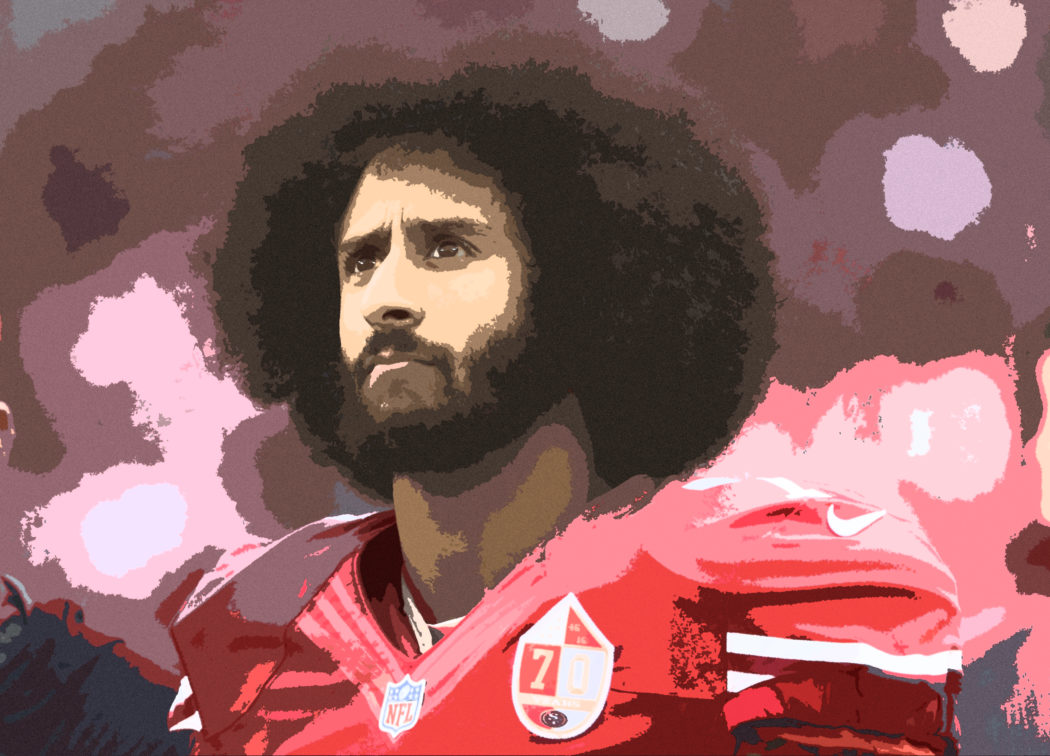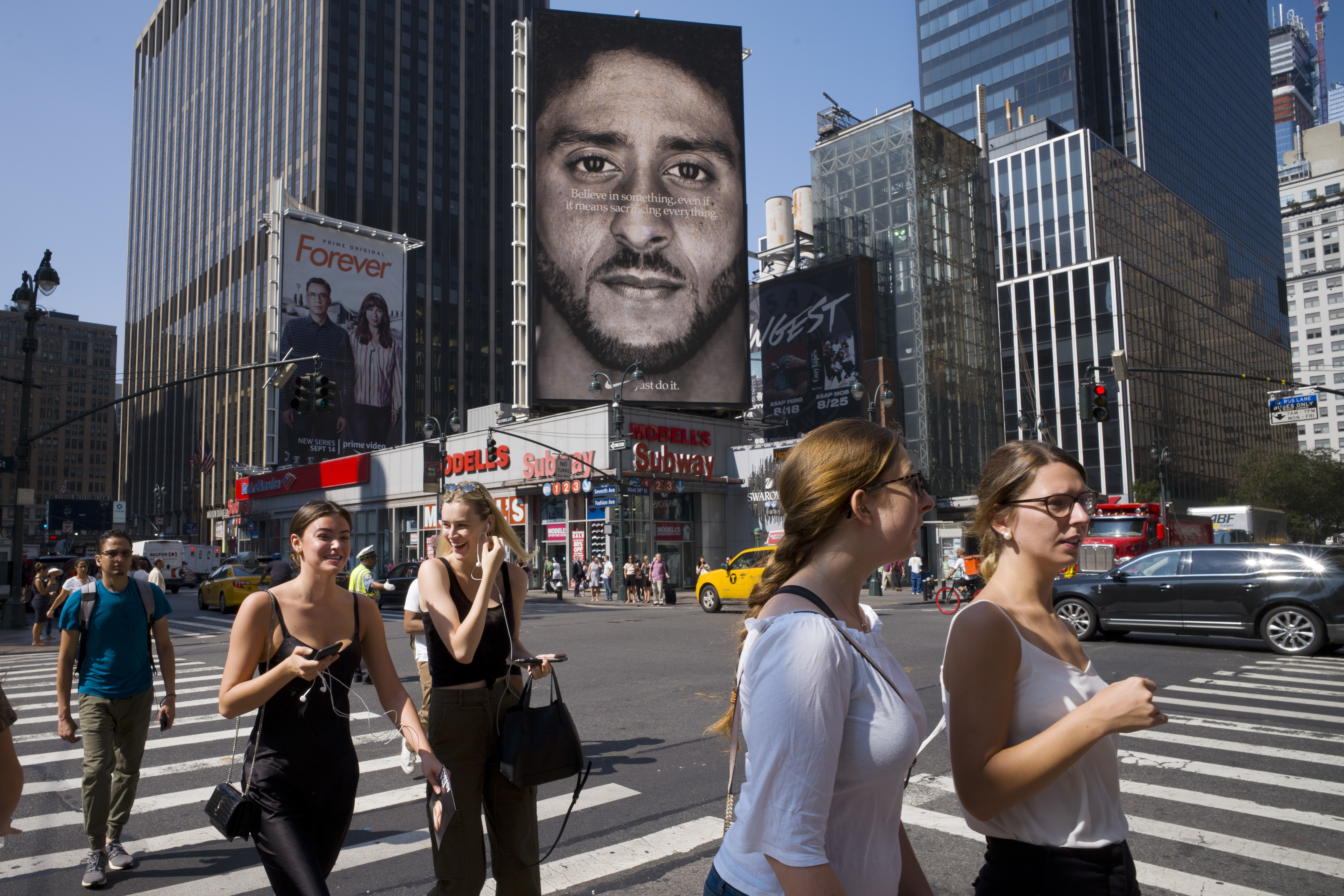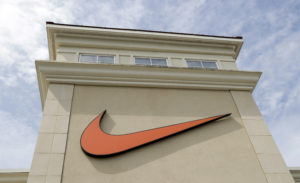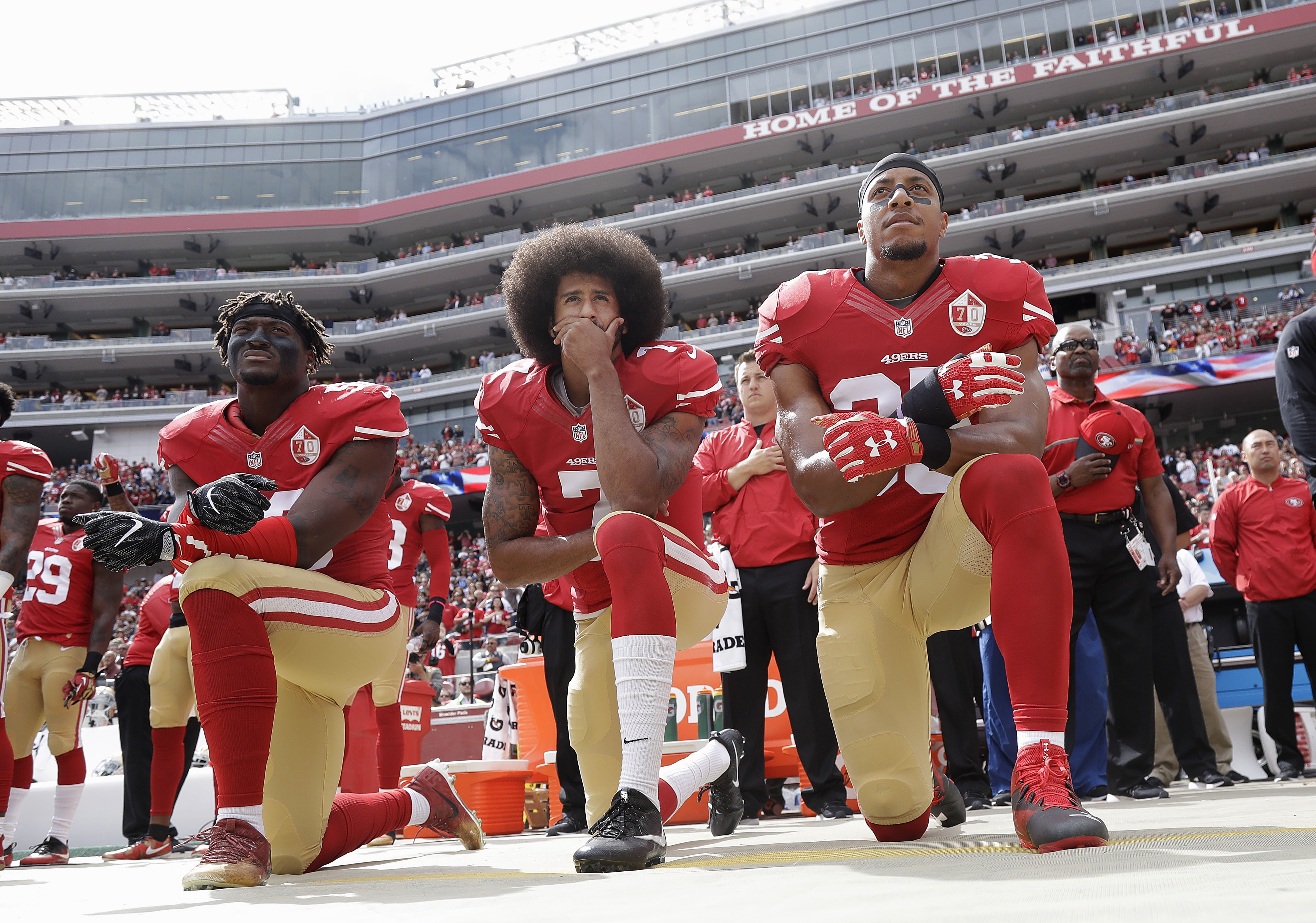COLUMN: Much ‘Just Do It’ about nothing
Editor’s Note: To submit a response to this column, or submit a letter to the editor on a new topic, email your submission to opinion@usustatesman.com.
You’re probably reading this with the expectation of another spirited debate about Colin Kaepernick’s protests and their effectiveness and morality. To save you the time, you won’t find it here. For the most part, all of our opinions about Kaepernick are firmly set and incredibly difficult to change. I could write thousands of words outlining my opinions on the subject (for the record, I do support Kaepernick’s protests), but in all likelihood, not a single person would rethink their opinion on the man or the protests.
So instead of going red in the face, let’s focus on Nike, the company that’s responsible for bringing the Kaepernick debate back to the forefront of the public mind.
People walk by a Nike advertisement featuring Colin Kaepernick on display, Thursday, Sept. 6, 2018, in New York. Nike this week unveiled the deal with the former San Francisco 49ers quarterback, who’s known for starting protests among NFL players over police brutality and racial inequality. (AP Photo/Mark Lennihan)
We tend to give companies too much credit. Sure, some companies may hold frequent blood drives or make sizeable contributions to charity, but more often than not, the underlying motives for these moves is not the goodness of the company’s heart. Usually, it’s in the goodness of the company’s bottom line.
So it is with Nike choosing former NFL quarterback Colin Kaepernick as the face of the 30th Anniversary of the company’s “Just Do It” campaign. Don’t get me wrong, there is still some political meaning behind Nike’s decision, but this has vastly more to do with money than a protest of police brutality. This is the same company that is still working to solve problems involving sexual harassment from a number of its executives. It’s the same company that is so widely associated with sweatshops that an entire Wikipedia page exists for it. Nike didn’t miraculously develop a conscience overnight.
Kaepernick’s name carries controversy. Whether you support or condemn his actions, the mention of his name spells doom for any Thanksgiving meal. Regardless of that fact, however, Kaepernick is still money. Despite being off an NFL roster for nearly two years, Kaepernick’s jersey remains a hot ticket item, ranking in the top 50 for jersey sales last year. With nearly two full years of data concerning Kaepernick’s marketability since his protests began, Nike obviously had sufficient proof that their bottom line would not be in danger by involving Kaepernick in their advertisements.
A large part of that is the demographics Nike tends to target. Nike’s usual audience are people age 18-40, both men and women, and the company has increasingly targeted teens and young adults as a primary consumer. Those same groups are also the groups that tend to agree with Kaepernick’s protests, as a poll from the Washington Post released in May of this year found that 57 percent of Americans age 18-29 viewed Kaepernick protesting during the anthem to be appropriate, compared to only 34 percent of Americans age 50-64 who said the same. That’s a bunch of background information to basically say young people tend to agree with Colin Kaepernick and young people tend to buy more Nike apparel. Therefore, this isn’t as large of a risk for Nike as it first may appear.
A Nike logo is displayed outside a Nike store in Charlotte, N.C., Tuesday, Sept. 4, 2018. Colin Kaepernick has a new deal with Nike, even without having a job in the NFL. Kaepernick’s attorney, Mark Geragos, made the announcement on Twitter, calling the former San Francisco 49ers quarterback an “All American Icon” and crediting attorney Ben Meiselas for getting the deal done. (AP Photo/Chuck Burton)
The vast majority of companies, especially those the size of Nike, have some sort of risk management team. The decision to plaster Kaepernick’s face across all of the company’s marketing space was not the work of a rogue marketing team. Nike has reviewed this choice for months, if not years, and their conclusion, as evidenced by the release of the new ad campaign, is that such a move would not hurt in an impactful way. First and foremost, that is the basis of Nike’s decision. It was the same when the company made Michael Jordan the face of the company at a time when featuring black athletes was not considered to be safe marketing strategies. Ethics first… as long as Nike’s financial interests won’t be hurt by following them.
Take a look at the other “socially responsible” causes that Nike chooses not to get involved in. It’s telling that Eric Reid is not included in Nike’s recent ad. Reid was the first player to join Kaepernick’s protest and, like Kaepernick, remains unsigned in the NFL despite clear evidence of his ability as an above-average starter. Also like Kaepernick, Reid has filed a lawsuit accusing the NFL of colluding to keep him out of the league. By excluding Reid, or any other member of the protest, Nike is quite clearly saying that the sole reason for Kaepernick’s involvement is his recognition.
FILE – In this Oct. 2, 2016 file photo, from left, San Francisco 49ers outside linebacker Eli Harold, quarterback Colin Kaepernick and safety Eric Reid kneel during the national anthem before an NFL football game against the Dallas Cowboys in Santa Clara, Calif. An arbitrator is sending Kaepernick’s grievance with the NFL to trial, denying the league’s request to throw out the quarterback’s claims that owners conspired to keep him out of the league because of his protests of social injustice. (AP Photo/Marcio Jose Sanchez, File)
Nike also made a splash by tweeting out a picture in support of Serena Williams after the French Open banned Williams’ catsuit, despite the suit’s use in preventing blood clots. No threat of removing sponsorship. Not even a press release. A simple tweet.
For a business, that type of behavior is frankly (and unfortunately) smart. Nike sells apparel, and to be too worried about other interests would risk the health of the company. In that sense, yes, there is some amount of bravery in partnering with Kaepernick. To Nike, the benefits received for their Kaepernick ad is worth whatever cost may come with it.
And it appears that sentiment is correct. Since running the ad, Nike has seen a 31 percent boost in sales.
That’s all they really wanted.
Daniel Hansen is the station manager for 92.3 Aggie Radio and a sports writer for the Utah Statesman. An English and Public Relations major, he’s a massive fan of food, music and sports, and is very much single.




